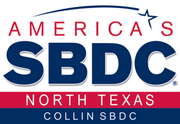
While there are several business valuation approaches and many valuation methods, the most commonly used and accepted method is the Multiple Of Seller’s Discretionary Earnings (Seller’s Discretionary Cash) Method. SDE makes business valuation made easy.
To understand the method, you should understand a few components:
Seller’s Discretionary Earnings (SDE)
The International Business Brokers Association defines discretionary earnings as the earnings of a business prior to the following items:
- Income taxes
- Non‐operating income and expenses
- Non‐recurring income and expenses
- Depreciation and amortization
- Interest expense or income
- Owner’s total compensation for those services that could be provided by a sole owner/manager
The process of “normalizing or recasting” the earnings essentially unravels the tax strategies and the benefits of ownership to fully identify the cash flow available to the owner under the current and normalized operating conditions.
Selecting the Appropriate Multiple
The Collin SBDC subscribes to the BIZCOMPS® database to determine multiples. The BIZCOMPS® database provides transaction details on “Main Street” businesses. The BIZCOMPS® database, designed for accountants, business appraisers, business intermediaries and their clients provides small company comparables. BIZCOMPS® contains over11,049 deals that provide details on purchases of “Main Street” businesses dating back to 1996. It should be noted that the BIZCOMPS® multiple does not include inventory so, the amount of normal and necessary inventory must be included to produce an indicated value.
To determine the indicated value for a controlling owner the Collin SDBDC will use the following steps are taken.
- Normalize and recast earnings based on tax returns and income statements to determine the
- Identify the base multiple based on BIZCOMPS and other empirical
- Adjust the multiple based on a determination of 14 business fundamentals related to the specific business and Business fundamentals have various weights related to the significance to the value of the business. The business fundamentals are shown on a subsequent page of this guide.
- Identify the normal Fair Market Value. This includes adjusting for excess or obsolete inventory.
- Multiply the SDE times the Adjusted Multiple and add to the value the FMV of the normal inventory levels.
The resulting value will give you a general idea of the value of the business.
Buyers Test
The next analysis is to run a buyers test, which takes different levels for down payment in relationship to profit levels required for the buyer to determine amount that can be financed.
You’ve got a lot on the line, so you deserve answers. Business valuation made easy is one of our specialties. Let us know how we can help.



